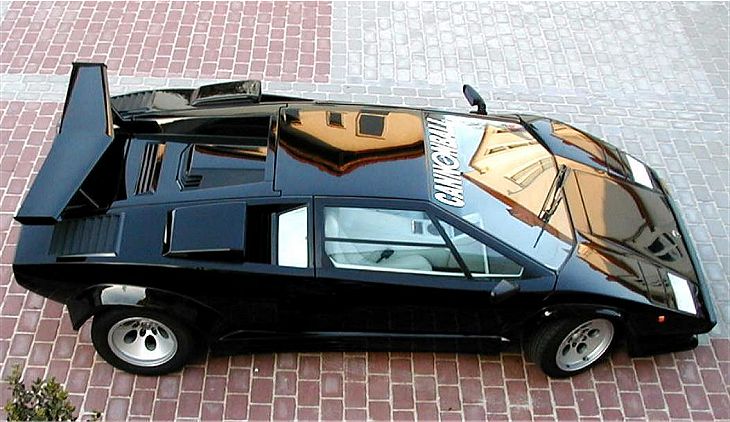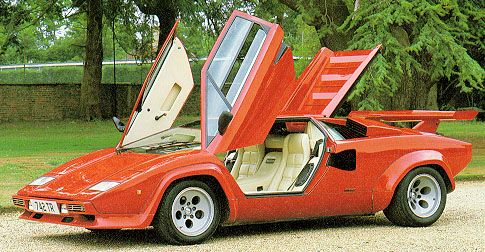Description
The Lamborghini Countach S Quattrovalvole, often referred to simply as the Countach S QV, was the most powerful and refined evolution of Lamborghini’s legendary wedge-shaped supercar. Introduced in 1985, it represented the peak of Countach development—a machine that combined the outrageous styling and raw presence of the earlier Countach S models with a new level of engineering sophistication. Its name, “Quattrovalvole,” meaning “four valves,” referred to the addition of four valves per cylinder in its V12 engine, an upgrade that transformed its performance and ensured the Countach remained one of the fastest and most desirable cars of its era.
By the mid-1980s, the Countach had already achieved near-mythic status as the ultimate symbol of performance and excess. Lamborghini, now under the Mimran brothers’ ownership, sought to update the model with both technical and aesthetic improvements that would carry it through to the end of the decade. The result was the Countach S QV—a car that retained the iconic silhouette created by Marcello Gandini but infused it with new power, refinement, and character.
At the heart of the S QV lay a re-engineered 5.2-litre V12 engine. Displacing 5,167 cc, it featured dual overhead camshafts per bank and four valves per cylinder—hence the Quattrovalvole designation. Fed by six twin-choke Weber 44 DCNF carburetors in European specification, the engine produced an astonishing 455 horsepower at 7,000 rpm and 500 Nm of torque at 5,200 rpm. For the U.S. market, Lamborghini adopted Bosch K-Jetronic fuel injection, which slightly reduced output to around 420 horsepower but improved reliability and emissions compliance. The five-speed manual transmission and rear-wheel-drive layout remained, but with the additional power, the Countach S QV could reach 100 km/h (62 mph) in under 5 seconds and exceed 295 km/h (183 mph). These figures placed it among the fastest production cars of the 1980s.
The increase in power required structural and aerodynamic refinements. The car retained the steel tubular spaceframe chassis but featured reinforced suspension components and improved high-speed stability. The additional height of the new cylinder heads necessitated a raised engine cover, giving the S QV a subtly different rear profile distinguished by its taller engine deck and additional cooling louvres. The combination of wider tyres, revised suspension geometry, and new Pirelli P7R compounds gave the Countach sharper handling and more predictable behavior at the limit.
Visually, the Countach S QV remained unmistakable. The sharp wedge silhouette, scissor doors, and aggressive proportions continued to dominate its design, but subtle differences distinguished it from earlier models. The bodywork included integrated side skirts, a deeper front spoiler, and, on most examples, the enormous optional rear wing that had by now become an integral part of the Countach’s identity. The car’s presence was overwhelming—low, wide, and angular, a sculpture of speed that seemed to defy gravity. It was both mechanical and artistic, every surface reflecting the uncompromising design ethos of the Sant’Agata factory.
Inside, the cabin reflected Lamborghini’s gradual shift toward greater refinement while maintaining the Countach’s characteristic intimacy. Deeply contoured leather seats provided better comfort, and the dashboard was revised with clearer instruments and more modern switchgear. The view forward was framed by the wide windscreen and tall dashboard, while the rear view remained practically nonexistent. Yet this was part of the Countach’s appeal—it felt like a cockpit rather than a car, demanding attention and rewarding focus. The craftsmanship, with hand-stitched leather and exposed mechanical details, gave it an authenticity few modern supercars can match.
Driving the S QV was an intense experience. The enlarged V12 responded instantly to throttle input, delivering a ferocious surge of acceleration accompanied by a metallic roar that filled the cabin. The gearbox, though heavy, engaged with precision, and the unassisted steering offered remarkable feedback once the car was moving. The suspension, firmer and more controlled than before, allowed for astonishing grip and stability at high speed, though the Countach still required strength and commitment from its driver. It was not a car for the faint-hearted—it was a physical, emotional machine that demanded involvement on every level.
Between 1985 and 1988, approximately 610 examples of the Countach S Quattrovalvole were built, making it one of the most successful versions in the model’s long production run. The European carbureted versions, with their twelve tall intake trumpets visible beneath the rear louvres, are especially prized for their visual and mechanical purity. The U.S. fuel-injected models, though slightly less powerful, offered improved drivability and became the mainstay of Lamborghini’s North American presence.
The Countach S QV marked the culmination of more than a decade of continuous refinement. It was the perfect synthesis of the Countach’s evolution—from the pure, sculptural simplicity of the LP 400 to the muscular confidence of the LP 500 S. More than any other version, it embodied Lamborghini’s philosophy: extreme performance wrapped in audacious design.
Today, the Countach S Quattrovalvole stands as one of the most iconic and collectible Lamborghinis ever built. It represents the ultimate expression of the classic Countach—a car that combined the elegance of the original concept with the raw power and drama of 1980s excess. Even now, decades after its debut, the S QV remains a living legend, a reminder of a time when supercars were mechanical masterpieces built with passion, precision, and a fearless sense of style.

